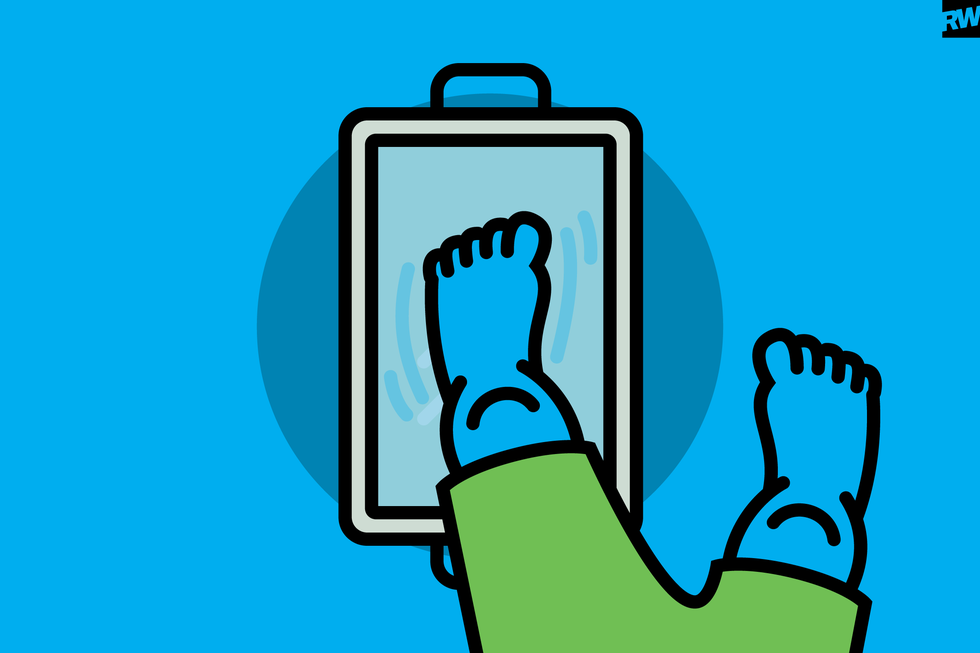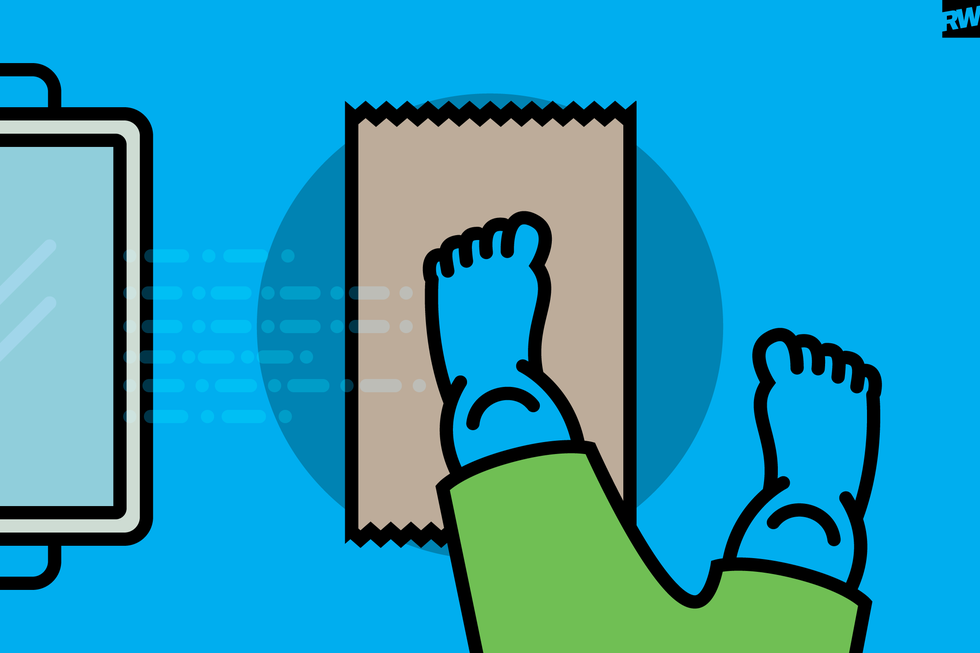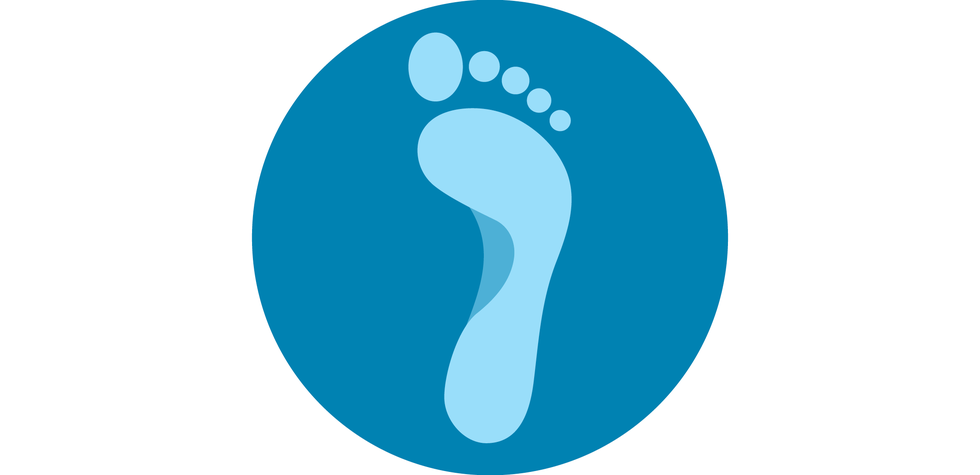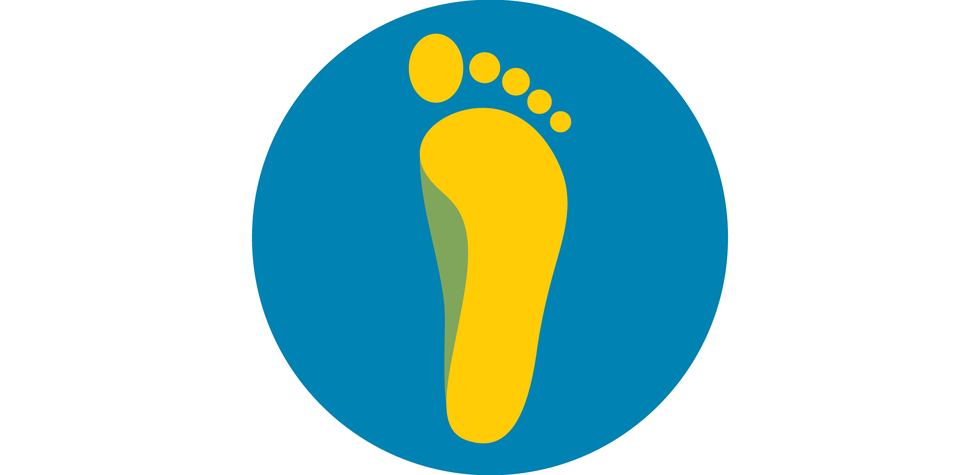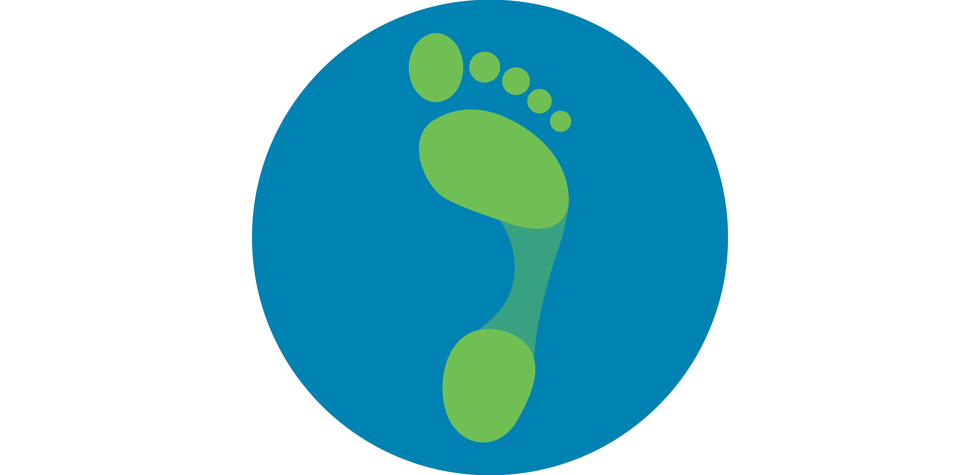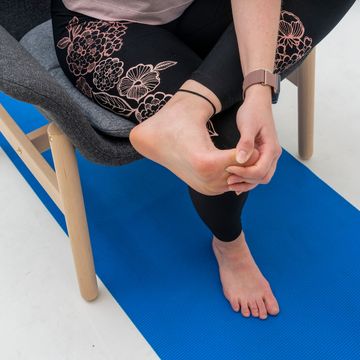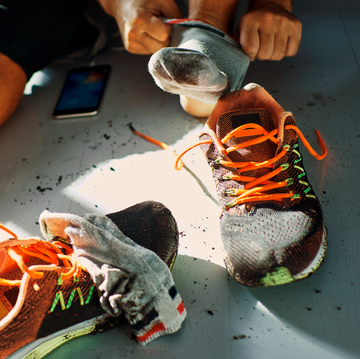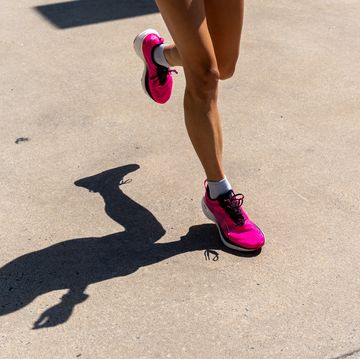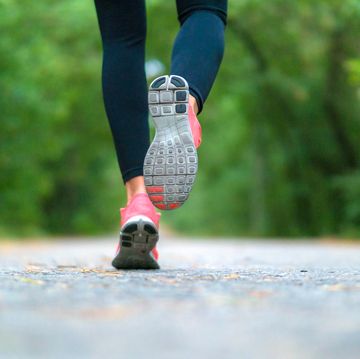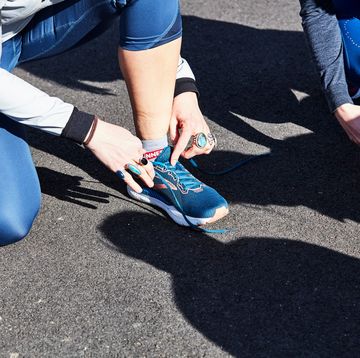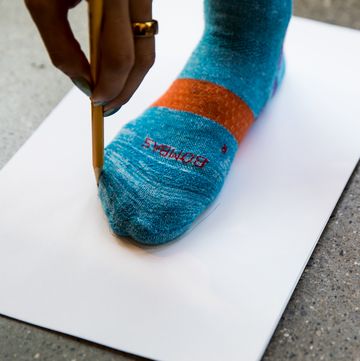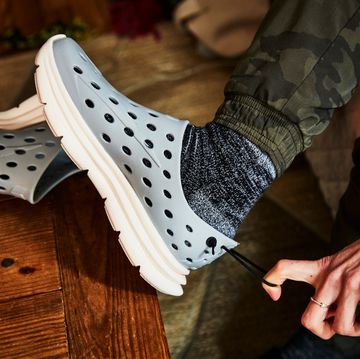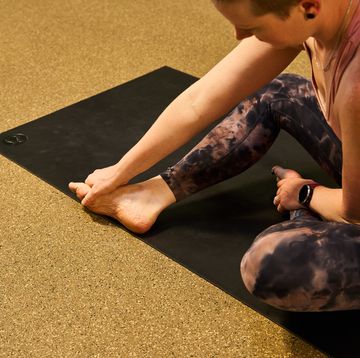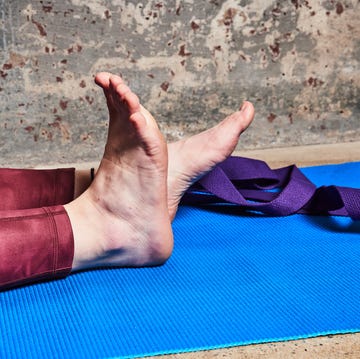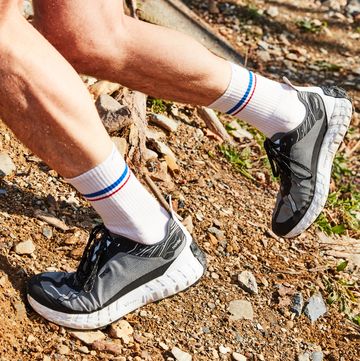Running shoes A Part of Hearst Digital Media Master the Half for you, it’s helpful to know more about your feet, including your arch type.
According to experts, there are three types of arches: flat, high, or normal. And knowing which category you fall into can help guide you to a shoe that meets your foot and gait needs.
If you’re not sure which arch type you have, we’ve got an easy way to figure it out, and it’s called the “wet test.” Make sure to do the test on both feet, as something like an old injury can cause differences from one foot to the other.
The Best Cushioned Running Sneakers.
How to Figure Out Your Arch Type
1. Pour a thin layer of water into a shallow pan.
2. Wet the sole of your foot.
3. Step onto a blank piece of heavy paper.
4. Step off and look down.
Note that the wet test only gives you one clue in the process of finding the right shoe. While many runners fall into the categories described below, some people have flat feet that are stiff and some have high but flexible arches, for example. Other variables such as your weight, biomechanics, Health - Injuries.
As always, you should try on and run in any shoe before you buy it, to see whether it feels right for your stride. Ideally, a fit specialist from a specialty running store can also assist you by asking questions about your running and injury history, looking at your old shoes, and observing you run.
If you have a history of injury, you should consult a medical professional such as a sports podiatrist or physical therapist Health & Injuries Treatments for Plantar Fasciitis, Guide to Mental Health.
The Arch Types—Explained
Look at the shape of your footprint and compare it with one of the following descriptions. Keep in mind, there’s no hard and fast rule to what shoe works best for various arch types (comfort still matters most), but this can guide you toward the right selection.
Normal (Medium) Arch
If you see about half of your arch region filled in, you have the most common foot type. Usually, this means you have an arch that naturally supports your bodyweight and pronates normally under load. Some pronation or “rolling in” of the foot is desirable and acts as a natural shock absorber. Most runners with this arch type can wear just about any shoe.
Flat (Low) Arch
If the arch of your footprint is filled in, it’s likely that your foot collapses inward when you run. This acts as a shock absorber, but the additional rolling in of your foot may stress your feet and knees, A Part of Hearst Digital Media.
Usually, a person with this arch type would benefit form shoes with more stability, such as internal wedges that build up the arch side, dual-density midsoles and supportive “posts,” or wider, more substantial midsoles.
High Arch
If your footprint shows little or no contact along the outside edge and you see just your heel and the ball of your foot, you have a “high” arch. Your foot may not roll in much when you run, but it doesn’t absorb much shock.
For people with this arch type, it’s typically best to go with a well-cushioned shoe with little or no stability features.
John Vasudevan, M.D. is an associate professor at the University of Pennsylvania. He is board-certified in Physical Medicine & Rehabilitation and Sports Medicine. He is a Team Physician for UPenn Athletics and medical director of the Broad Street Run and Philadelphia Distance Run, and previously for the Rock 'n' Roll Half-Marathon and Tri-Rock Triathlon in Philadelphia. He is a director of the running and endurance Sports Medicine Program at Penn Medicine. Dr. Vasudevan provides non-operative management of musculoskeletal conditions affecting athletes and active individuals of all levels, and combines injury rehabilitation with injury prevention. He utilizes a variety of ultrasound-guided procedures and regenerative approaches such as platelet-rich plasma and percutaneous ultrasonic tenotomy. He sees patients at the Penn Medicine and the Philadelphia Veterans Administration hospital. Dr. Vasudevan attended medical school at the University of Wisconsin School of Medicine and Public Health in Madison. After his Transitional Year in Tucson, Arizona, he went to residency in PM&R at Thomas Jefferson University in Philadelphia and onwards to Stanford University for his fellowship in Sports Medicine. He has been in practice at the University of Pennsylvania since 2012.


